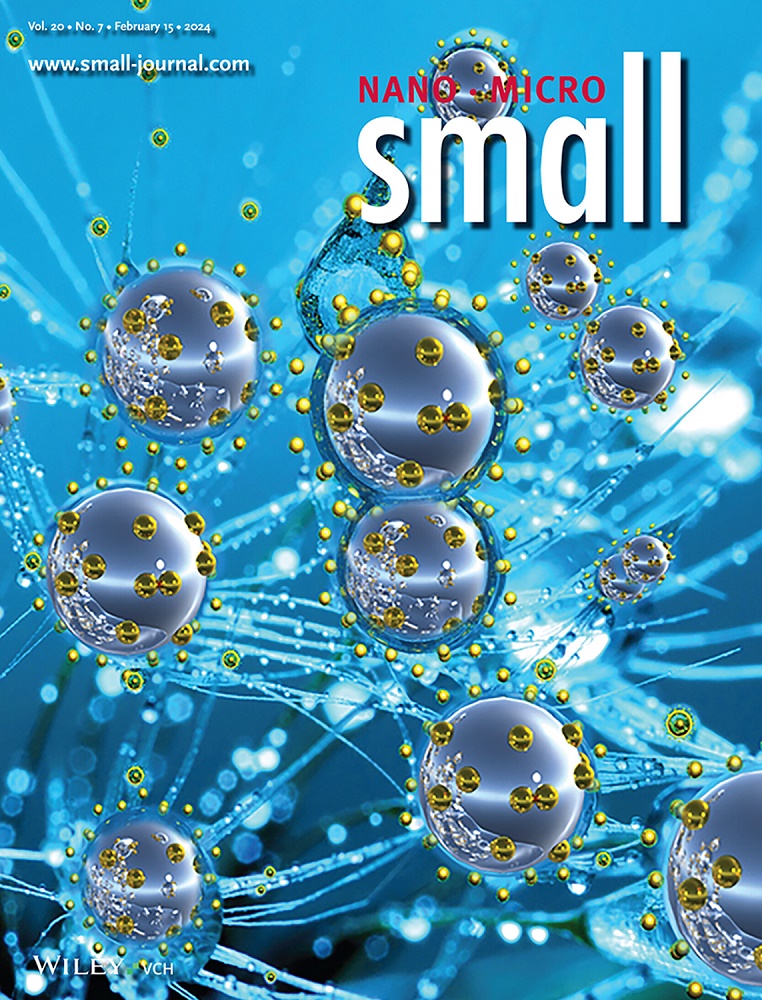Scalable Fabrication and Integration Strategies for Metal Halide Perovskite Direct X-Ray Detectors.
IF 12.1
2区 材料科学
Q1 CHEMISTRY, MULTIDISCIPLINARY
引用次数: 0
Abstract
Metal halide perovskites have emerged as promising materials in direct X-ray detection applications, due to their strong X-ray absorption ability, large carrier mobility-lifetime product, tunable band gaps, and low cost. In the past several years, X-ray detectors based on metal halide perovskite materials have exhibited exceptional detection performance, such as high sensitivity and low detection limits, and are attracting immense interest in academic and industrial fields. To meet the demands for low-dose, high-resolution, and fast-response X-ray imaging, the development of large-area, multi-pixel X-ray detector arrays is essential. Despite the rapid development of multi-pixel X-ray imaging technology based on perovskites, there is still room for improvement in imaging performance. This review introduces the principle, device architecture, and key performance parameters of direct X-ray imaging, with a focus on the issues of scalable fabrication of perovskites and their integration with pixelated electrode substrates for multi-pixel imaging. A series of scalable bottom-up and top-down fabrication methods for perovskite thick films and integration strategies is summarized. This review aims to provide an overview of the recent advances of perovskite-based direct-conversion X-ray detectors, and outline the challenges and their potential future directions in this field.金属卤化物钙钛矿直接x射线探测器的可扩展制造和集成策略。
金属卤化物钙钛矿由于其强的x射线吸收能力、大的载流子迁移寿命产物、可调的带隙和低成本而成为直接x射线探测应用的有前途的材料。近年来,基于金属卤化物钙钛矿材料的x射线探测器表现出高灵敏度、低检出限等优异的检测性能,引起了学术界和工业界的极大兴趣。为满足低剂量、高分辨率、快速响应的x射线成像需求,研制大面积、多像元x射线探测器阵列势在必行。尽管基于钙钛矿的多像素x射线成像技术发展迅速,但成像性能仍有提高的空间。本文介绍了直接x射线成像的原理、器件结构和关键性能参数,重点介绍了钙钛矿的可扩展制造及其与像素化电极衬底的集成,以实现多像素成像。总结了一系列可扩展的自底向上和自顶向下制备钙钛矿厚膜的方法和集成策略。本文综述了基于钙钛矿的直接转换x射线探测器的最新进展,并概述了该领域的挑战和潜在的未来方向。
本文章由计算机程序翻译,如有差异,请以英文原文为准。
求助全文
约1分钟内获得全文
求助全文
来源期刊

Small
工程技术-材料科学:综合
CiteScore
17.70
自引率
3.80%
发文量
1830
审稿时长
2.1 months
期刊介绍:
Small serves as an exceptional platform for both experimental and theoretical studies in fundamental and applied interdisciplinary research at the nano- and microscale. The journal offers a compelling mix of peer-reviewed Research Articles, Reviews, Perspectives, and Comments.
With a remarkable 2022 Journal Impact Factor of 13.3 (Journal Citation Reports from Clarivate Analytics, 2023), Small remains among the top multidisciplinary journals, covering a wide range of topics at the interface of materials science, chemistry, physics, engineering, medicine, and biology.
Small's readership includes biochemists, biologists, biomedical scientists, chemists, engineers, information technologists, materials scientists, physicists, and theoreticians alike.
 求助内容:
求助内容: 应助结果提醒方式:
应助结果提醒方式:


